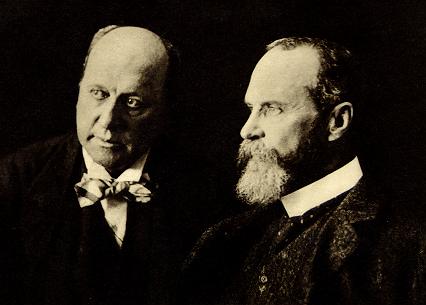"Stanford economics professor John Taylor has a new paper in which he takes aim at recent economic policy, and fires with both barrels, concluding that "government actions and interventions caused, prolonged, and worsened the financial crisis."
Taylor begins with an argument he articulated at the 2007 Jackson Hole conference that excessively loose U.S. monetary policy in 2002-2005 was a factor contributing both to the housing boom and subsequent housing bust. The solid line in the figure below shows the actual path that the fed funds rate followed over this period, with the dashed line reflecting what Taylor believes would have been closer to the optimal response.
 |
Taylor's counterfactual simulations suggest that these excessively low interest rates set by the Fed were a key factor causing the unsustainable housing boom, the consequences of whose collapse we are still trying to recover from.
 |
Taylor also challenges the claim that the low interest rates of 2002-2004 could be attributed to a global savings glut, noting that total world savings was in fact an unusually low fraction of GDP.
 |
Taylor also reviews the evidence that interest rate differentials such as the LIBOR-OIS spread reflected default risk rather than liquidity shortages. In Taylor's view they did, in which case the new Fed measures such as the Term Auction Facility could have done little to affect the targeted interest rate spreads.
 |
Taylor further offers support for the proposition that by cutting interest rates too quickly at the start of 2008, the Fed aggravated the commodity price boom which in turn was one factor contributing to the recession of 2008.
 |
Although Taylor makes a number of valid points, I feel he overstates the role of the Fed in directly causing all the problems. I would instead point to inadequate regulation of key financial institutions as the single most important factor that brought us where we are today. I read Taylor's evidence as providing further support for the view that when we ask too much of monetary policy, it can do more harm than good. The Fed tried too hard to fight the jobless recovery of 2002-2004 with monetary stimulus, and that ended up making the severity of the subsequent downturn in housing that much worse. The Fed tried too hard to prevent a downturn by bringing interest rates down so quickly at the beginning of 2008, and that ended up aggravating the oil price shock and ultimately making the hit to the auto sector in the first half of 2008 that much worse. And the Fed tried too hard in a futile effort to narrow default-risk premia, leaving itself with awkward balance sheet problems that will be tricky to resolve without aggravating our problems even further.
"You can't blame a guy for trying," the saying goes. But one reading of Taylor's evidence is that we might be quite justified in doing just that."
Recall that for the year previous to the events in Figure 13, the spread had been fluctuating in the 50 to 100 basis point range which was where it was through the first half of September 2008.You can see that the spread moved a bit on September 15th, which is the Monday after theweekend decisions not to intervene in Lehman Brothers. It then bounced back down a little bit on September 16 around the time of the AIG intervention. While the spread did rise during the week following the Lehman Brothers decision, it was not far out of line with the events of the
previous year. On Friday of that week the Treasury announced that it was going to propose a large rescue package, though the size and details weren't there yet. Over the weekend the package was put together and on Tuesday September 23, Federal Reserve Board Chairman Ben Bernanke and Treasury Secretary Henry Paulson testified at the Senate Banking Committee about the TARP, saying that it would be $700 billion in size. They provided a 2-1/2 page draft of legislation with no mention of oversight and few restrictions on the use. They were questioned intensely in this testimony and the reaction was quite negative, judging by the large volume of critical mail received by many members of the United States Congress. As shown in Figure 13 it was following this testimony that one really begins to see the crises deepening, as measured by the relentless upward movement in Libor-OIS spread for the next three weeks. Things steadily
deteriorated and the spread went through the roof to 3.5 per cent."
This makes sense. The was growing uncertainty about the extent and competence of the Government Intervention.
"3.2 The Lack of a Predictable Framework for Intervention
The main message of Figure 13 is that identifying the decisions over the weekend of Sept 13 and
14 as the cause of the increased severity of the crisis is questionable. It was not until more than a
week later that conditions deteriorated. Moreover, it is plausible that events around September
23 actually drove the market, including the realization by the public that the intervention plan
had not been fully thought through and that conditions were much worse than many had been led to believe. At a minimum a great deal of uncertainty about what the government would do to aid financial institutions, and under what circumstances, was revealed and thereby added to business and investment decisions at that time ( I AGREE, BUT THE CAUSE WAS STILL THE LEHMAN DECISION ). Such uncertainty would have driven up risk spreads in the interbank market and elsewhere ( TRUE ). Some evidence of the uncertainty is found in a survey taken
later (November 5) by the Securities Industry and Financial Markets Association (SIFMA); it
showed that 94 percent of securities firms and banks found that the TARP lacked clarity about its operations ( TRUE ). The problem of uncertainty about the procedures or criteria for government intervention to prevent financial institutions from failing had existed since the time of the Bear Stearns intervention in March ( NOT TRUE. THE EXPECTATION WAS THAT THE GOVERNMENT WOULD INTERVENE ). The implication of that decision for future interventions was not made clear by policymakers. This lack of predictability about Treasury-Fed intervention policy and recognition of the harm it could do to markets likely increased in the fall of 2008 when the underlying uncertainty was revealed for all to see ( THE UNCERTAINTY WAS ABOUT WHETHER WOULD INTERVENE, WHICH WAS THE EXPECTATION ). What was the rational for intervening with Bear Stearns, and then not with Lehman, and then again with AIG? What would guide the operations of the TARP? Worries about the lack of clarity were raised in many quarters. At a conference on The Future Role of Central Banking: The Urgent and Precedent-Setting Next Steps held on the Stanford
campus in July to address the new interventions, I argued [7] that the U.S. Treasury and the Fed urgently needed to develop a new framework for exceptional access to government support for financial institutions ( I AGREE ). I made analogies to a reform put in place at the IMF in 2003 which clarified the circumstances under which the IMF would provide loans to countries experiencing crises ( I AGREE ). After these IMF reforms were put in place, the eight year emerging market crisis period that had begun in 1995 came to a close. Analogously, a new exceptional access framework would describe the process that the U.S. and other governments would take when intervening and providing loans to an institution. It would work like the IMF’s exceptional access framework (EAF) which indicated the procedures the IMF should take when providing loans to a country. The more policy-makers could articulate the rationale and the procedures the better ( I AGREE COMPLETELY ).
Conclusion and Policy Implications: Domestic and International
In this paper I have provided empirical evidence that government actions and interventions
caused, prolonged, and worsened the financial crisis ( TRUE ). They caused it by deviating from historical precedents and principles for setting interest rates, which had worked well for 20 years ( DON'T AGREE ). They prolonged it by misdiagnosing the problems in the bank credit markets and thereby responding inappropriately by focusing on liquidity rather than risk ( I AGREE ). They made it worse by providing support for certain financial institutions and their creditors but not others in an ad hoc way without a clear and understandable framework ( I AGREE ). While other factors were certainly at play, these government actions should be first on the list of answers to the question of what went wrong ( I AGREE ).What are the implications of this analysis for the future? Most urgently it is important to reinstate or establish a set of principles to follow to prevent misguided actions and interventions in the future. Though policy is now in a massive clean-up mode, setting a path to get back to these principles now should be part of the clean-up. I would recommend the following:
First, return to the set of principles for setting interest rates that worked well during the
Great Moderation. ( I DON'T DISAGREE, BUT THIS WAS NOT THE MAIN PROBLEM )
Second, base any future government interventions on a clearly stated diagnosis of the
problem and a rationale for the interventions. ( I AGREE )
Third, create a predictable exceptional access framework for providing financial
assistance to existing financial institutions. The example of how the International
Monetary Fund set up an exceptional access framework to guide its lending decisions to emerging market countries is a good one to follow. ( I AGREE )
Some of these reforms require a rethinking of the international financial architecture and others
are purely domestic. For example, to keep policy interest rates on track in a globalized economy
it would help to introduce the notion of a global inflation target [3]. This would help prevent
rapid cuts in interest rates in one country if they perversely affect decisions in other countries.
Policy makers could then discuss global goals for inflation and the impact that one central bank
might have on global inflation. In contrast, developing exceptional access frameworks for
central banks and finance ministries could be done in each country without a global structure.
Similarly setting controls on leveraging at the financial institutions could be done in each
country. Finally I want to stress that the research presented in this paper must be considered preliminary. We are still in the middle of the crisis and more data need to be collected and analyzed. There are and will continue to be differences of opinion. Carefully documented empirical research is needed for sorting out these differences. We should be basing our policy evaluations and conclusions on empirical analyses not ideological, personal, political, or partisan grounds."
I don't understand the problem with cooperation among countries in setting these policies. Finally, I find his reading of the graph strange. There are other graphs as well, all showing that the Lehman Decision precipitated the crisis. What the graph shows is that things got worse over time, but the true extent of the implications of the Lehman Decision took some time to digest. As well, expecting everything to fall apart immediately seems strange.
I'm sorry that I can't reproduce his graph which is on page 16 of his paper, but it shows everything going sideways and getting worse after Lehman. Other than that, I agree with most of what he says. But, again, since Lehman precipitated this crisis by not being bailed out, the investors and the markets were obviously hoping for a bailout. The real question is why. What were the assumptions and presuppositions of this expectation?
 "Many commentators have argued that the reason for the worsening of the crisis was the decision by the U.S. government (more specifically the Treasury and the Federal Reserve) not to
"Many commentators have argued that the reason for the worsening of the crisis was the decision by the U.S. government (more specifically the Treasury and the Federal Reserve) not to






































No comments:
Post a Comment